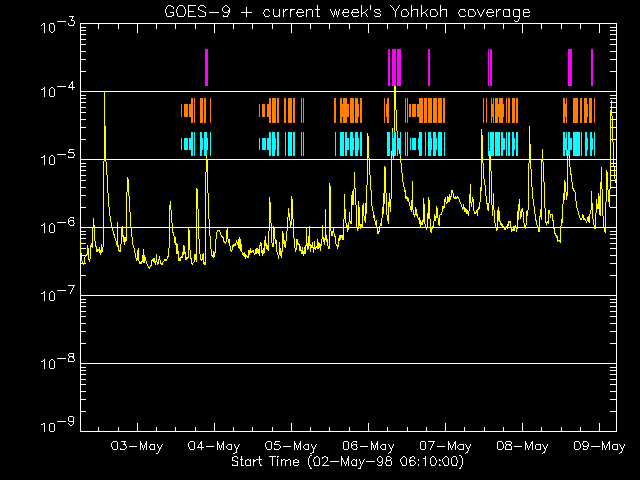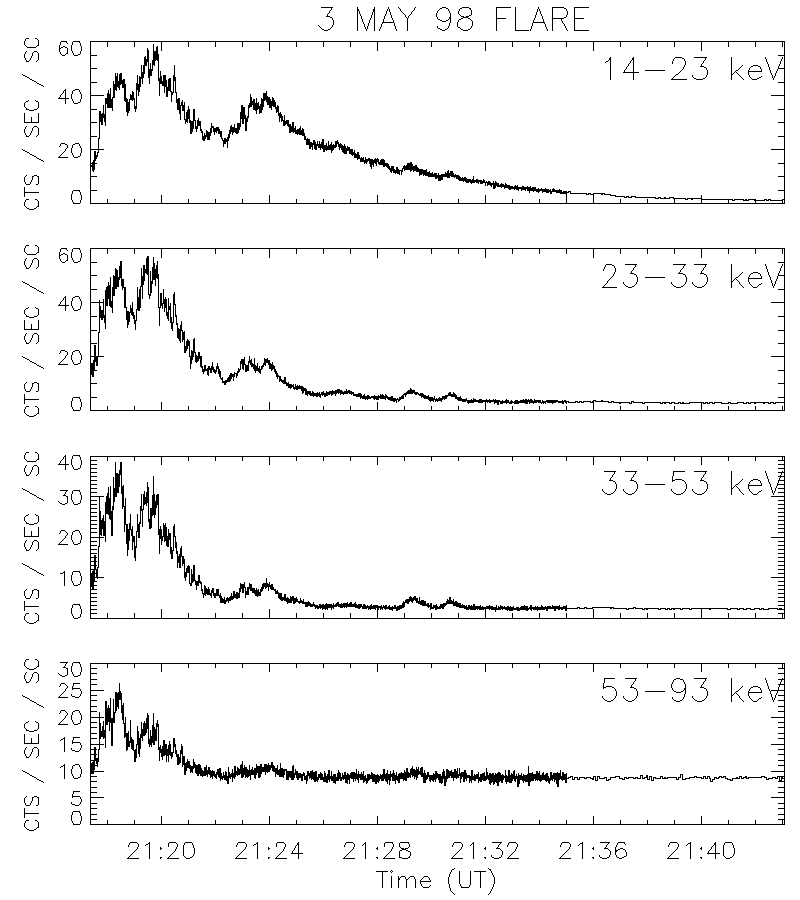
(Week 19, 1998)
SXT took part in two Joint Observing Programs (JOPs) this week. We made images to support JOP 082 ("Magnetic Flux Disappearance in Cancelling Bipoles", Karen Harvey coordinating) and JOP 059 ("High Cadence Activity Studies and the Heating of Coronal Loops", Robert Walsh coordinating).
See weekly operations report for details (not frozen; this page shows the current week's information). The GOES time series for the week of this "nugget" is shown below.

In the display above (click to enlarge), the colored lines show the times of SXT images that currently are on-line at ISAS. The purple lines are flare mode. The gaps will be considerably reduced when the NASA telemetry arrives and gets reformatted. For a summary index listing of the weekly science reports, click here.
At approximately 21:17 UT on 3-may-98, active region NOAA 8210 produced an M-class flare. Yohkoh was able to observe the event successfully, and for this week's Nugget we present some pictures.
A quick
way to survey the hard X-rays produced in the event is provided
by a set of light curves from HXT (below). The result here is
interesting, because
the spectrum is extremely hard and the event has a long duration.
(Click on the graphs to see a larger version.)

When Flare Mode is triggered, SXT begins making images in a
somewhat different manner than in Quiet Mode. The flare images
are typically at a higher cadence (i.e., more images per minute),
and also include some lower-resolution images to show a somewhat
wider field of view.
The links below will show you movies made from the half-resolution and
quarter-resolution images, which give us a chance to look for material
ejected from the flare site. The M flare of 3-may-98, the subject
of these movies, threw off some visible, "clumpy" ejecta.
| Quarter-resolution movie |
| Half-resolution movie |
Finally, a look at the Half-resolution images with a different
color palette allows us to emphasize the filling of coronal loops
near the flare site. Keep your eyes on the region just to the
southwest (lower-right) of the central portion of the flare.
Loop that are initially invisible fill in and brighten to the
point where the image begins to saturate.
| Loop-filling movie |